John Grant of Freuchie (1596-1637) was a Scottish landowner.
Contents

John Grant of Freuchie (1596-1637) was a Scottish landowner.

He was a son of John Grant and Lilias Murray, a daughter of John Murray of Tullibardine and Agnes Graham. [1] James VI and I and Anne of Denmark came to their wedding at Tullibardine Castle. The king and his valet John Wemyss of Logie brought masque costumes and danced at the wedding feast. [2]
John Grant was educated by Patrick Inglis, who later became kirk minister of Kirkwall. [3] After his marriage in 1614, he was known as John Grant of Mulben. He seems to have been knighted in 1617 when King James visited Scotland. James requested that the Laird of Grant send ptarmigan and capercaillie as Scottish speciality foods to impress his retinue on their arrival in Newcastle. [4]
John Grant managed the family estates with his father and travelled to Edinburgh in 1620 to meet the lawyers Thomas Hope, Thomas Nicolson, and James Oliphant. Their route took them to Blair Atholl and Huntingtower. The legal dispute concerned teind duties owed to the Marquess of Huntly and John Gordon of Buckie. In Edinburgh, John Grant found that some of his followers were in town to settle a dispute by legal means. Grant was able to settle the matter himself, without using the law courts, which was deemed more to the credit of the chiefs of the clan. [5]
John Grant became the sixth Laird of Grant or Freuchie in 1622. He sold the lands of Lethen to Alexander Brodie of East Grange, as the expenses of managing his estates and visiting Edinburgh were very large. Lethen had belonged to his mother, Lilias Murray, and she also helped by selling some of her lands in Cromdale. Additionally, Lilias Murray took up residence at Castle Grant, and in return made over 1000 merks of her annual income to her son. [6]
In August 1631 he was in London and went to see his uncle Patrick Murray, 1st Earl of Tullibardine at Theobalds. [7]
The family home was Freuchie Castle, then known as Ballachastell. The house is now called Castle Grant. John Grant commissioned more than a dozen sculptures of heraldic beasts and animals from Ralph Rawlinson in 1629. Grant objected to two choices of beasts and Rawlinson offered to sculpt a gorgon and a rhinoceros. [8] Rawlinson is chiefly known for his work on a pageant at Edinburgh Castle and Holyrood Palace in 1617. In this entertainment St George fought a dragon and Highland soldiers captured the Castle of Envy. [9] Rawlinson also carved sundials, and worked for the Marquess of Huntly at the Chanonry of Ross in 1633. [10]
In John Grant's time there was a long gallery and he engaged a painter, John Anderson of Aberdeen, to decorate a new wooden ceiling in "fine colours" in 1635. Anderson was also to gild the carved initials or hearaldy of four "storm" or dormer windows which lit the space. Anderson also supplied and decorated four picture frames for portraits. [11]
Many letters and documents from the Grant family papers were printed by William Fraser in the Chiefs of Grant in 1883. The family archive is now held by the National Records of Scotland.
John Grant married Mary Ogilvie, a daughter of Walter Ogilvie of Deskford and Findlater in 1614. [12] Their children included:

Duke of Atholl, named after Atholl in Scotland, is a title in the Peerage of Scotland held by the head of Clan Murray. It was created by Queen Anne in 1703 for John Murray, 2nd Marquess of Atholl, with a special remainder to the heir male of his father, the 1st Marquess.
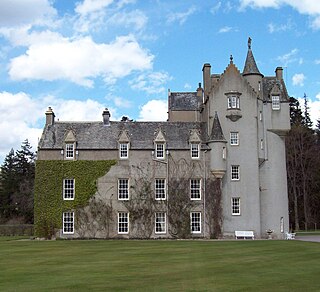
Ballindalloch Castle, known as the "pearl of the north", is a Scottish castle located in Ballindalloch, Banffshire, Scotland. It has been the family home of Macpherson-Grants since 1546.

Clan Grant is a Highland Scottish clan, with one main branch, Grant of Grant, and several cadet branches, such as Grant of Glenmoriston.

James Drummond, 4th Earl of Perth, KT, PC was a Scottish peer and politician.
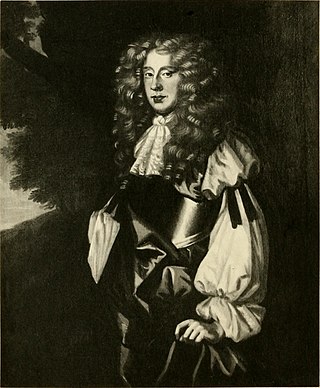
John Murray, 1st Marquess of Atholl, KT was a leading Scottish royalist and defender of the Stuarts during the English Civil War of the 1640s, until after the rise to power of William and Mary in 1689. He succeeded as 2nd Earl of Atholl on his father's demise in June 1642 and as 3rd Earl of Tullibardine after the death of his first cousin the 2nd Earl in 1670.

Clan Murray is a Highland Scottish clan. The chief of the Clan Murray holds the title of Duke of Atholl. Their ancestors were the Morays of Bothwell who established the family in Scotland in the 12th century. In the 16th century, descendants of the Morays of Bothwell, the Murrays of Tullibardine, secured the chiefship of the clan and were created Earls of Tullibardine in 1606. The first Earl of Tullibardine married the heiress to the Stewart earldom of Atholl and Atholl therefore became a Murray earldom in 1626. The Murray Earl of Atholl was created Marquess of Atholl in 1676 and in 1703 it became a dukedom. The marquess of Tullibardine title has continued as a subsidiary title, being bestowed on elder sons of the chief until they succeed him as Duke of Atholl.
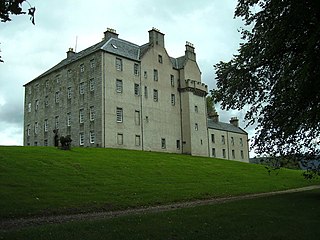
Castle Grant stands a mile north of Grantown-on-Spey and was the former seat of the Clan Grant chiefs of Strathspey in Highlands, Scotland. It was originally named Freuchie Castle but was renamed Grant in 1694. The castle is a Category A listed building and the grounds are included in the Inventory of Gardens and Designed Landscapes in Scotland.
Robert Mor Munro, 15th Baron of Foulis, and 18th chief of the Clan Munro was a 16th-century Scottish chief. He was known as Robert Mor on account of his large stature. He was the eldest son of Robert Munro, 14th Baron of Foulis. Although this Robert Munro is traditionally 15th Baron and 18th overall chief of the clan, he is only the 8th Munro chief that can be proved by contemporary evidence.
John Gordon (1609–1679) was the 14th Earl of Sutherland.
Anne Lyon, Countess of Kinghorne, was a Scottish courtier said to be the mistress of James VI of Scotland.

Tullibardine is a location in Perth and Kinross, Scotland, which gives its name to a village, a castle and a grant of nobility.
The Murrays of Aberscross were a minor noble Scottish family who were seated at Aberscross Castle, in the county of Sutherland, Scotland. The Murrays in Sutherland are recorded specifically as a clan in two acts of the Scottish Parliament of the 16th century.
Lady Lilias Grant was a Scottish letter-writer and matriarch of the Grant clan of Freuchie.
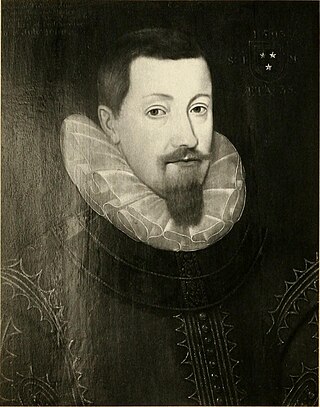
John Murray, 1st Earl of Tullibardine was a Scottish courtier and leader of the Clan Murray.
John Grant of Freuchie was a Scottish landowner.
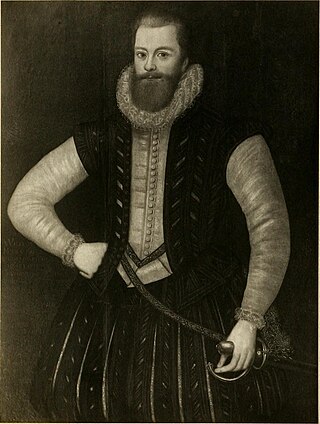
William Murray, 2nd Earl of Tullibardine was a Scottish landowner and courtier.
Tullibardine Castle was a castle located in the village of Tullibardine, 2 miles (3.2 km) north of Auchterarder in Perth and Kinross, Scotland.

James Grant, 7th of Freuchie (1616–1663) was a Scottish landowner, the seventh Laird of Freuchie. He was the 18th Chief of Clan Grant.
John Grant of Freuchie was a Scottish landowner.

Ludovick Grant, 1st of Grant and 8th of Freuchie (1641–1717) was a Scottish politician and soldier. He was the 19th Chief of Clan Grant and referred to as the "Highland King."